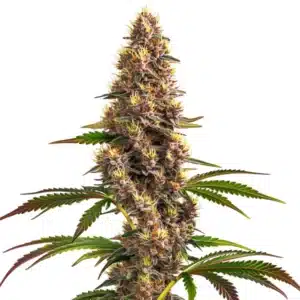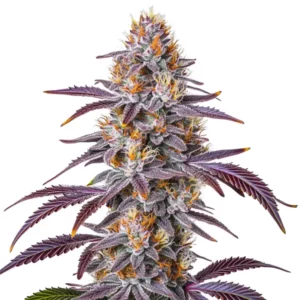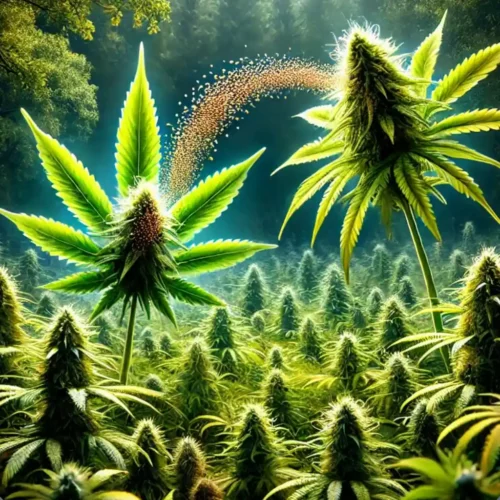Despite the fact that cannabis is gaining more ground every day, there are still questions and issues that have not been resolved. The difference or distinction between genetype and phenotype is one of those differences that many people, including cannabis users, do not know how to answer. So, in this guide, we are going to explain in an easy and clear way what each of these terms consist of.
Recommended Strains
Deelite Autoflower
 THC: 18% - 20%
THC: 18% - 20% Type of seed: Autoflowering
Type of seed: Autoflowering Phenotype: Mostly Sativa
Phenotype: Mostly Sativa Day to flower: 8 - 10 weeks
Day to flower: 8 - 10 weeks
Neville's Haze
 THC: 21%
THC: 21% Type of seed: Feminized
Type of seed: Feminized Phenotype: Mostly Sativa
Phenotype: Mostly Sativa Day to flower: 10 - 14 weeks
Day to flower: 10 - 14 weeks
As an introduction, we can tell you that the genotype is the DNA of the plant, that is, what the cannabis plant carries inside it. The phenotype is the physical structure of the plant or what we see on the outside. In other words, the phenotype (F) is the physical expression of its genetic genotype (G), or the genetic code of the plant.
Cannabis, like the rest of the plants, is a living organism that changes as it reproduces. Genetics and their adaptations to the environment come into play in this evolution. Often, growers see how plants that come from the same strain end up being different, so much so that they could even be considered plants of different destinations. This can be explained mainly through two terms: genotype and phenotype.
All plants have a genotype or genetic code that they inherit from their predecessors. This determines the growth, appearance, and other characteristics of the plant; however, this is not the only genetic factor that comes into play in its development. The environment or medium where the plant grows will cause some traits to develop more than others. This interaction of the genetic code with the environment will result in the so-called phenotype. This explanation can be seen more clearly through its scientific formula: genotype (G) + environment (E) + genotype and interactions with the environment (GE) = phenotype (F)
The Evolution of the cannabis plant
To better understand these terms as they relate to cannabis, we can go back to the origins of marijuana. Although cannabis is an ancient plant, it is difficult to define its exact beginnings. One of the first cannabis strains came from Pakistan, specifically from the Hindu Kush region. These strains were considered the best in the world, largely due to the fact that they evolved naturally over thousands of years. Later, they were called Landrace and today, these seeds are highly prized among collectors due to their genetic diversity thanks to interactions with the environment. In more general terms, Indica and Sativa strains are distinguished. These two varieties have also evolved according to the environment where they have grown. On the one hand, the Indicas, short in height with great resin production, grew in areas between 30 and 50 degrees latitude. Meanwhile, the Sativa variety, with taller plants and slower growth, has preferred to evolve in places closer to the equator.
Thus, in natural environments, genetics have evolved towards different phenotypes due to their interaction with the conditioning factors of nature. Later, indoor cultivation changed plant conditions. In these environments, factors such as temperature, humidity, lighting, or artificial nutrients are an important part of the phenotypic expression. Even something as insignificant as the angle of the lights can cause considerable variations in the phenotype of the marijuana. Therefore, external conditions to the plant, no matter how minimal, can prevent the genotype from evolving in the same way, giving rise to different phenotypes. Knowing the exact meaning of these two terms allows us to understand why plants with similar genetics develop in different ways, even within the same crop.
Promos & Deals
How to see the effects of the Phenotype and Genotype in cannabis plants
If you grow the seeds that produce the bud that you smoke, you will realize that there are larger and more robust plants and others that are smaller or more compact. Despite the fact that the seeds were produced from the same plant (they come from the same bud) you can notice these differences and that is due to the genetics that those cannabis plants inherited.
The above, because some plants may have more dominant traits from the father and others from the mother or even from some other ancestor. For the same reason, they will express themselves with different traits. Another example is when some “indica” type plants, thanks to their ancestral genetics, show sativa-type traits and appear with thin leaves and stems and have slower growth, unlike her indica sisters that have wide leaves, thick branches, and faster, more explosive growth.
For the reasons already explained, it becomes necessary to stabilize the genetics to prevent the plants that are born from the seeds from showing different traits. At Blimburn Seeds, we work hard so that you can grow the highest quality cannabis seeds in your garden. This means that each of the Blimburn weed strains are stabilized.
Stabilizing a strain means making it homogeneous, so that all the seeds of that variety produce offspring that are uniform and faithful (phenotype) to the genetics of the strain (genotype). Stabilizing a strain means making it homogeneous so that all of its seeds produce uniform offspring with a dominant phenotype. For example, mostly sativa genetics should have long branches and thinner leaves.
Pure varieties are stable, meaning the seed of one plant will grow in the same way as another seed of another plant of the same variety. In other words, if you grow a strain like OG Kush, you can be sure that the plants are more compact with short internodes, thick branches, and wide leaves, among other characteristics of the phenotype of this cannabis variety. In sufficiently large crops, stabilization occurs naturally over time. Climate, day length, altitude, and soil quality all contribute to the genetic makeup of cannabis.
For this reason, before launching genetics into the market, many seed banks carry out mass cultivation processes in greenhouses, indoors or outdoors, in order to select the best specimens until they find the most homogeneous cannabis varieties. After a certain time, the strains become homogeneous and each seed will produce the same genetics.
Pure strains are often used to create hybrids as they have known traits that can be passed on to new strains. In this case, we can say that many Landrace or Autochthonous strains of weed are crossed with “hybrid” varieties to generate this much-needed stability in cannabis plants. One example of this is Deelite Auto.

Deelite Auto
This autoflowering variety is a strain that represents the theme of phenotype and the genotype in a great way. This is because Deelite Auto is a strain that originated from the crossing of a Thai x Afghana x Rudelarys. In other words, the typical Thai sativa genetics were mixed with an Afghan variety that is mostly indica to generate genetic stability and then crossed with a rudelarys strain to obtain the autoflowering characteristic.
So, despite being a mostly sativa variety, you can find phenotypes with a hybrid tendency and even some with indica-type traits in Deelite Auto due to its Afghani parents that can be seen in some plants of this variety. Another important fact is that the rudelarys parent also provides stability to the autoflowering seeds of this variety, promoting a very fast growing cycle.
In just 8-10 weeks of cultivation, you get yields of 1.47-1.82 oz/ft2 indoors and 12-15oz/plant outdoors with buds that have THC levels of 18%-20%. With Deelite Auto flowers, you will feel states of euphoria, a lot of joy, and some relaxation. In addition, one of the main qualities of this genetic is its medicinal power because it helps people with arthritis, insomnia, and chronic pain.
The importance of phenotype and genotype
The most experienced breeders manipulate the genotypes or phenotypes of a variety of plants to create varieties with unique qualities. Since the 1960s, the vast majority of hybrids have mixed indicas and sativas to create strains that produce big, fat buds in relatively short periods of time (typical of indica strains) and induce powerful, brain-invigorating and creative effects (typical of sativa strains).
On the other hand, breeders often try to take advantage of the physical constitution of a specific variety to create a strain that is better suited to a particular growing environment. For example, many seed banks offer strains that produce typical sativa characteristics when grown as an indica (rather short but bushy) to satisfy indoor growers.
Lastly, breeders also look to cross strains for their chemical makeup. For example, therapeutic seed banks often cross varieties that are rich in CBD with others that are rich in THC to create strains with great therapeutic potential. If you understand the qualities of your plants, especially the genes that give your plants their unique characteristics, you will be able to experiment with the genes of your different plants and cross them to create new varieties with their own unique qualities.
Neville`s Haze
An example of a cross between indica and sativa genetics is the classic variety, Neville`s Haze, as it originated from a cross between Northern Lights #5 (indica variety) and Haze (sativa variety). This cross gave rise to one of the most famous weed strains of all time which happens to be mostly sativa. Neville`s Haze can be harvested after 100 days of flowering, delivering heavy yields of 2.29 oz/ft2 for indoor grows. This strain is ideal for growing techniques such as SCROG.
Outdoors, Neville’s Haze produces very heavy harvests of 17-21 oz/plant. You can get highly potent buds that are 21% THC, inducing users into a state of focus with feelings of happiness that end in a state of bearable relaxation. This strain combines all of this with intense citrus flavors that penetrate both on the palate and on the nose with each puff and is intensified by the diesel notes that emanate from these genetics.

Avoid the genetic instability of your cannabis plants
The ups and downs of plant genetics can be seen as you pass through any modern crop field. For example, fields of strongly hybridized and self-crossed cereals are usually uniform. However, there are always a few individuals that stand out from the crowd. There is always a corn, wheat, or sorghum plant with a stem that is too tall and takes longer to mature than its fellow crops. There may also be an atypical plant that shows unexpected variations. These plants express recessive genes and are reminiscent of some ancestor of the strain or attempts by the plant to express a variation of the genetic mix.
With cannabis, there are different mutations that weed plants present on certain occasions as is the case with diploid plants or those that show duck-foot leaves. These expressions are due to what was pointed out in the previous paragraph and are considered rarities of the weed. Other examples include albino plants or the so-called “cereal phenotype”, hence, a good selection of genetics is so important. At Blimburn Seeds, each of the seeds we sell are selected from top quality genetics to obtain 100% effective crops.
Chronic Widow
We can guarantee you that Chronic Widow is a very stable variety because it descends from two parental genes that are recognized for this characteristic: Chronic and White Widow. If you grow this mostly indica strain, you are going to get buds with a THC level of 17%-23% after harvesting 2.29 oz/ft2 indoors. Outdoors, be careful because you can get an incredible 21 oz/plant, so you will need help when harvesting.
Other qualities of this variety are its flavors that are characterized by their earthy tastes with spicy touches and the effect it produces which sends users on a sociable trip with moments of relaxation and many sensations of happiness.
You are already aware of the essential differences and the importance of the phenotype and the genotype in cannabis plants. In your next crop, you should try to use stabilized cannabis seeds like the ones we offer at Blimburn Seeds so that you can obtain a homogeneous crop, full of powerful and high-quality buds.


















